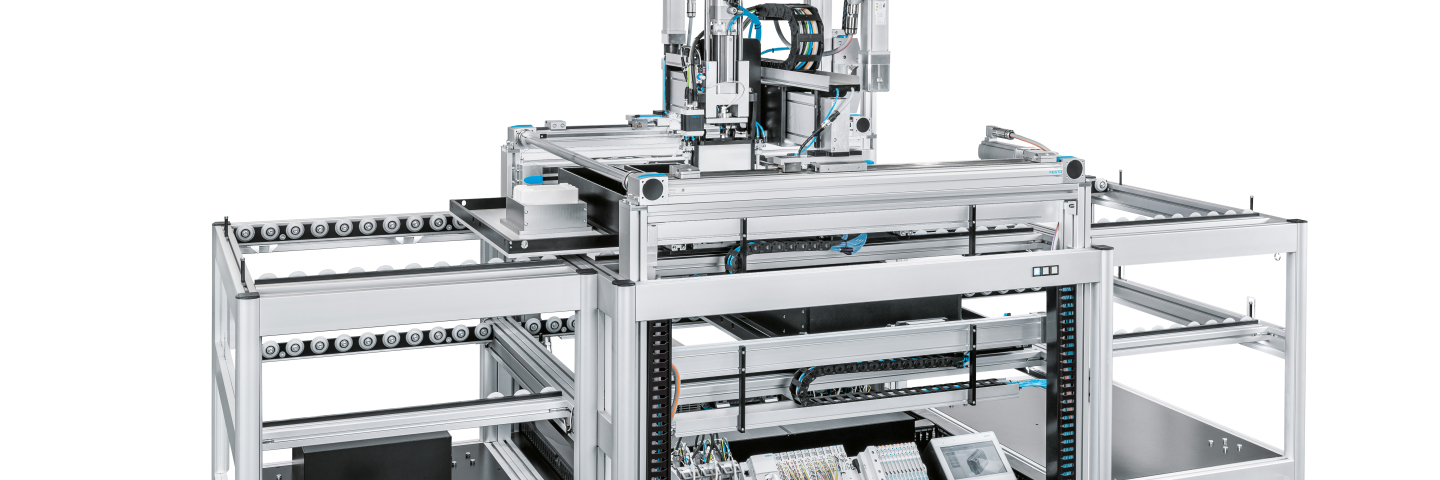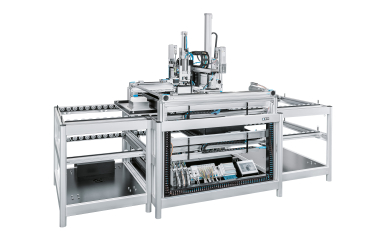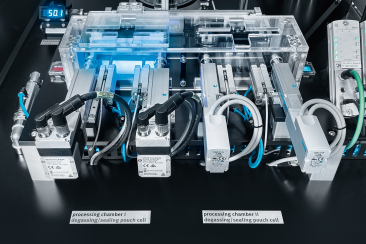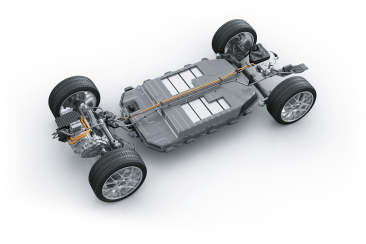
From battery cell production to the installation of electric motors
The battery cells alone account for some 40% of the added value in the manufacture of an electric vehicle. On no continent are the manufacturing capacities for lithium-ion batteries growing as fast as in Europe.
Increasing focus on Europe
Current forecasts estimate that the percentage of global manufacturing will increase from 6% today to up to 25% by 2030. The production of battery cells is highly automated. This is because battery cells as a high-tech product depend more on good infrastructure in terms of engineering than low personnel costs. This will make the sector ever more interesting, even in the highly developed industrial states of Europe with their important car factories as well as machine and system builders, starting from the production of individual battery cells to the assembly of the battery modules.
Key factors in battery manufacturing
As the battery manufacturing process is extremely sensitive, three factors need to be taken into account for the automation components: the dry room environment, cleanroom requirements and possible interfering particles like non-ferrous metals. Catalogue products from Festo can be used in the dry room without restriction. The reason for this is that only water-free lubricants and GRP/CFRP-reinforced polymers are used in components subject to abrasion. None of the around 60 different greases used by Festo contains water as part of the lubricant’s formulation, which is why these greases do not dry out. Cylinders, valves, grippers and drives, all handling, vacuum and compressed air systems, sensors, filters, regulators and fittings from more than 80 product series from Festo can be used in ISO class 7 cleanroom environments. Most of them are also suitable for classes 6 and 5, some even for class 4.
Depending on the application, products in battery cell production must not emit any interfering particles such as copper, zinc or nickel. Otherwise there is a risk that the quality of the batteries is reduced or that they are unusable. That is why Festo has defined criteria restricting the use of copper, zinc and nickel in its product development: metallic materials with copper, zinc or nickel as a main component are excluded from use.
Degassing and sealing of battery cells
Handling systems from Festo are already equipped with copper, zinc and nickel-free automation products. This makes them perfect for use in degassing and sealing. These core processes of battery cell production take place immediately after initial charging of the battery cells with electrical voltage, and involve piercing the battery cells with lances and extracting the forming gas produced during contacting. Pneumatic and electric actuators from Festo are used for handling and piercing the battery cells.
The benefits that handling solutions from Festo bring to these processes are high speed and high throughput as well as reliability and repetition accuracy. For example, a cantilever handling system based on the spindle axes ELGT from Festo ensures dynamic and reliable loading and unloading of the process chambers. The compact and low-cost spindle axes ELGT from Festo with integrated double guide are perfect for combining into 2D and 3D cantilever systems.
Right up to the electric powertrain
The efficient production of components for the electric powertrain is a deciding factor in the economic success of electromobility. The electric motor together with the battery pack form its central part. When assembling the battery module and pack assembly, factors such as variable production volumes, component geometries as well as occupational safety and continuous monitoring to minimise risks play a crucial role. The key to increased efficiency is the use of suitable cross-technology handling solutions. In combination with a standardisation strategy, which already pays off at an early stage of the project, economies of scale can be exploited from batch sizes of just 2 or more. Reproducible and transferable process parameters optimise commissioning. The reduced component variety guarantees an efficient supply of spare parts and at the same time reduces downtimes that could be caused by critical, process-relevant components.
Drive and sensor technology from Festo ensures that the individual process steps have the required high degree of automation. Handling solutions that have a mix of electric and pneumatic components offer the combined benefits of both technologies and ensure the sturdy, reliable and precise gripping and transporting of battery cells. In the handling system for battery modules, the pneumatic cylinder DSBC with integrated position transmitter SDAT, displacement encoder FENG and safety brake DACS in combination with the electric cantilever axis ELCC and a servo motor EMMT offers a host of positive characteristics: as well as inline process control, these include early error detection and tracking, the optimal coordination of the motor and axis to the specified process as well as the low energy requirement.
Integrated safety concept
Suitable automation technology makes a significant contribution to functional safety and greater system availability during battery module assembly: pneumatic quarter turn actuators actively lock the cells. The sensors can be easily parameterised and configured via an IO-Link® interface. In parallel to the movement, opto-electrical sensor technology senses the mechanical alignment of the cell. The polarity is measured electrically; and if the voltage is not correct, the cell is removed. The inspected cells are then inserted and correctly positioned in the module housing.
All safety-relevant functional groups and components have a redundant design. In this process, intelligent components are used for data generation, acquisition and processing to create transparent production concepts. A statistical process data monitoring system evaluates data and shows, among other things, when the gripper needs to be replaced. Condition monitoring thus avoids downtimes and optimises maintenance procedures.
Decentralised intelligence including CODESYS SoftMotion
A decentralised control concept with stand-alone solutions makes sense in order to achieve the highest possible plant and machine availability (OEE). This results in independent stations instead of sequential, permanently installed line concepts. The control and automation system CPX-E-CEC with Motion Control (CODESYS V3) opens up new possibilities by doing some of the work of the main controller. This frees up resources that can be used for data analytics, for example. This architecture creates a production network for complete data acquisition and component tracing. A digital twin forms the basis for simulation purposes.
Automation and training from a single source
In battery and electric vehicle manufacturing worldwide, having employees with the right training is key. To quickly upskill a large number of employees and equip them with the right training and knowledge, Festo Didactic offers industry-specific learning concepts, ranging from access to the Festo learning platform LX for self-study to training factories for hands-on training with knowledge transfer to the shopfloor.
Festo is a global player and an independent family-owned company with headquarters in Esslingen am Neckar, Germany. Festo has set standards in industrial automation technology and technical education ever since its establishment, thereby making a contribution to sustainable development of the environment, the economy and society. The company supplies pneumatic and electrical automation technology to 300,000 customers of factory and process automation in over 35 industries. Digitalization, AI and the LifeTech sector with medical technology and laboratory automation are becoming increasingly important. The products and services are available in 176 countries. With about 20,600 employees in over 250 branch offices in around 60 countries worldwide, Festo achieved a turnover of around €3.45 billion in 2024. More than 8% of this turnover is invested in research and development. In this learning company, 1.5 % of turnover is invested in basic and further training. Festo Didactic SE is a leading provider of technical education and training and offers its customers worldwide comprehensive digital and physical learning solutions in the industrial environment.




